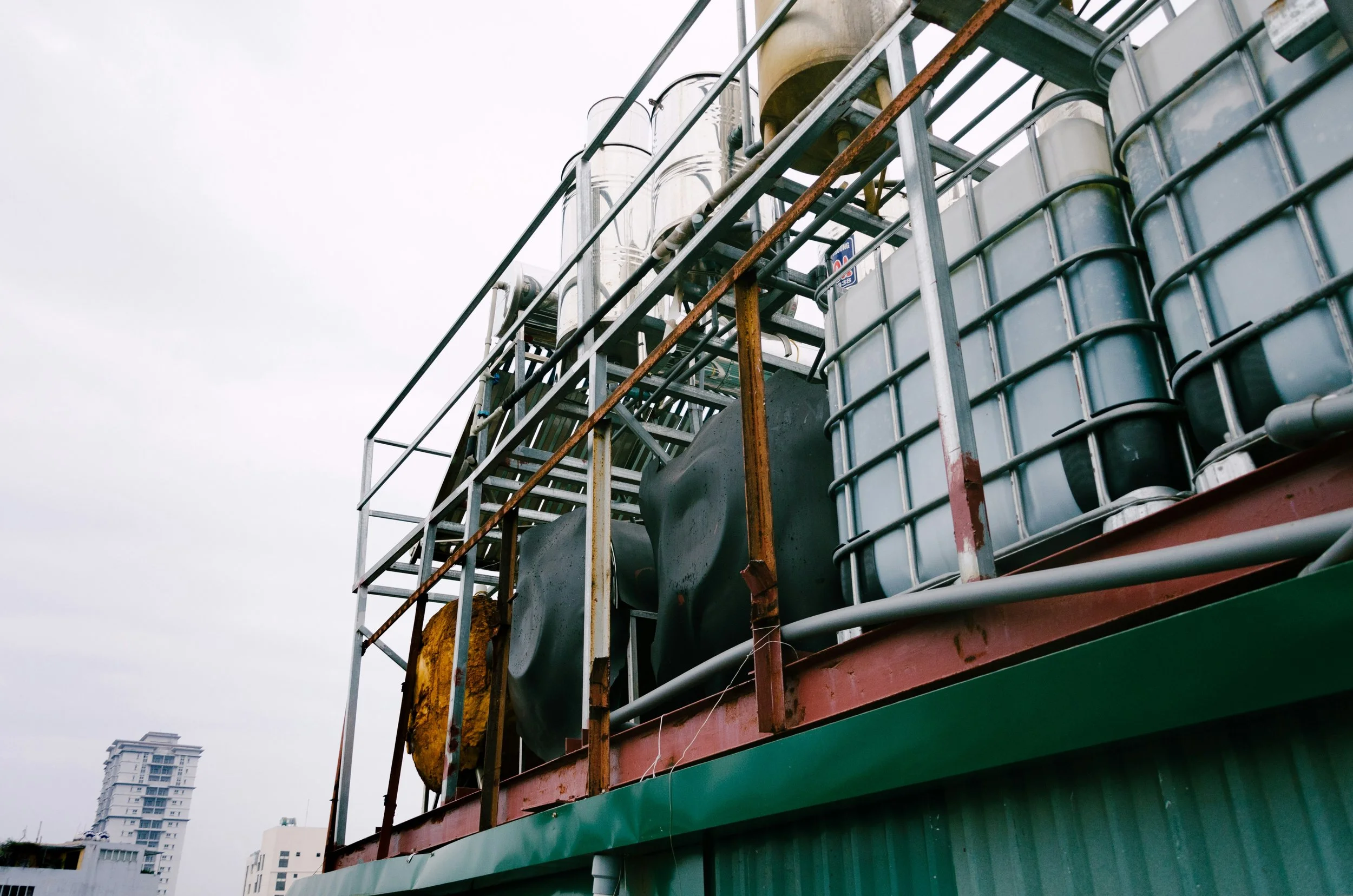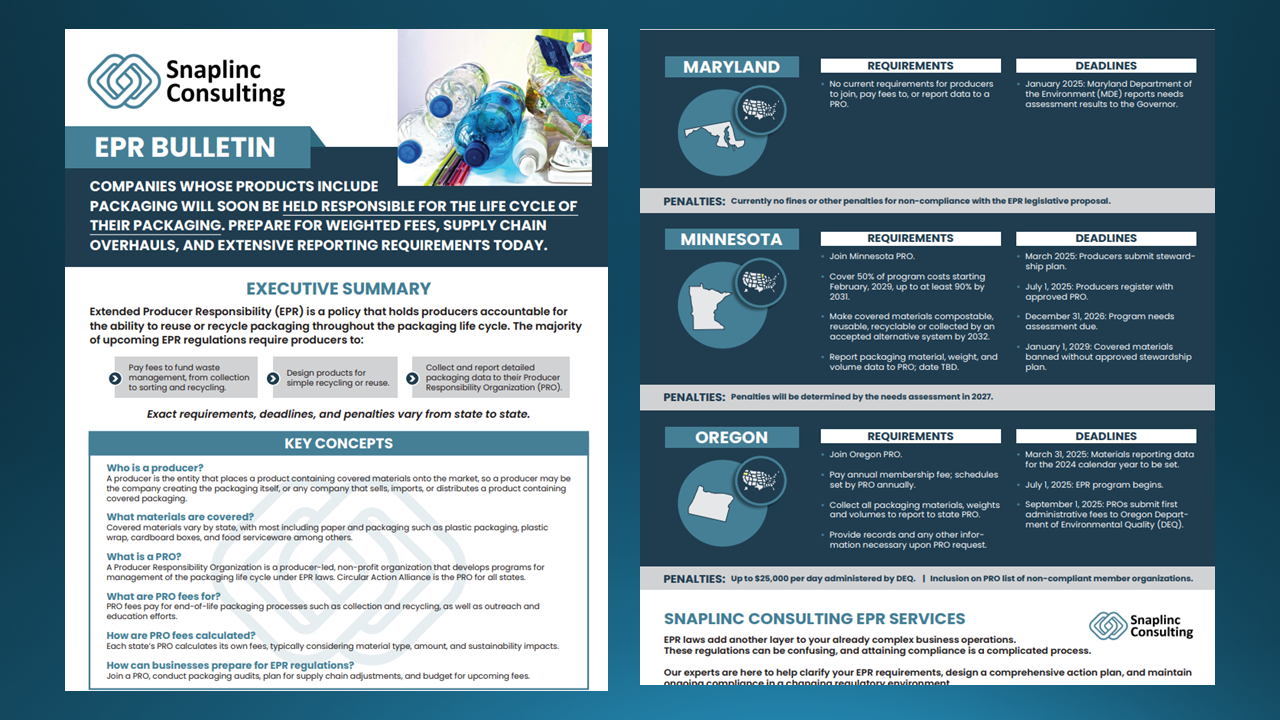PFAS Reporting Proceeds: 2025 EPA Update
May 12, 2025 Update: The EPA announced an interim rule pushing back PFAS reporting to October 13, 2026 for most manufacturers. Small manufacturers reporting exclusively as importers must report by April 13, 2027.
The Environmental Protection Agency (EPA) is ramping up its efforts to limit contamination from per- and polyfluoroalkyl substances (PFAS). In late April, EPA Administrator Lee Zeldin released a new framework including a significant number of actions covered PFAS reporters should carefully consider when preparing for reports. New information for companies covered under the Toxic Substances Control Act (TSCA) includes:
EPA strategies to strengthen PFAS data collection efforts.
Intent to make data collection less burdensome for smaller entities.
Continuation of the PFAS reporting timeline.
PFAS Reporting Will Proceed
Part of the new suite of actions is an intent to apply section 8(a)7 of TSCA to efficiently collect necessary from reporters “without overburdening small businesses and article importers.” The takeaway here is that reporting for covered companies will still proceed, although the timeline has changed.
The reporting window for data submission opens on April 13, 2026.
The majority of reporters will have to submit their complete reports by October 13, 2026.
The exception is small businesses who are reporting solely on PFAS contained in imported articles, who have until April 13, 2027 to submit reports.
The First Wave of PFAS Updates
The EPA’s new actions are designed to tackle PFAS in a coordinated effort from all of the Agency’s program offices. The actions fall under three principles: strengthening the science, fulfilling statutory obligations and enhancing communication, and building partnerships. The goal of the actions is to create a foundational toolbox and provide the investment required to help states and individual communities deal with PFAS contamination. The EPA announcement outlines the plan as follows:
Strengthening the Science
Designate an agency lead for PFAS to better align and manage PFAS efforts across agency programs
Implement a PFAS testing strategy under Toxic Substances Control Act (TSCA) Section 4 to seek scientific information informed by hazard characteristics and exposure pathways
Launch additional efforts on air related PFAS information collection and measurement techniques related to air emissions
Identify and address available information gaps where not all PFAS can be measured and controlled
Provide more frequent updates to the PFAS Destruction and Disposal Guidance—changing from every three years to annually—as EPA continues to assess the effectiveness of available treatment technologies
Ramp up the development of testing methods to improve detection and strategies to address PFAS
Fulfilling Statutory Obligations and Enhancing Communication
Develop effluent limitations guidelines (ELGs) for PFAS manufacturers and metal finishers and evaluate other ELGs necessary for reduction of PFAS discharges
Address the most significant compliance challenges and requests from Congress and drinking water systems related to national primary drinking water regulations for certain PFAS
Determine how to better use RCRA authorities to address releases from manufacturing operations of both producers and users of PFAS
Add PFAS to the Toxic Release Inventory (TRI) in line with Congressional direction from the 2020 National Defense Authorization Act
Enforce Clean Water Act and TSCA limitations on PFAS use and release to prevent further contamination
Use Safe Drinking Water Act authority to investigate and address immediate endangerment
Achieve more effective outcomes by prioritizing risk-based review of new and existing PFAS chemicals
Implement section 8(a)7 to smartly collect necessary information, as Congress envisioned and consistent with TSCA, without overburdening small businesses and article importers.
Work with Congress and industry to establish a clear liability framework that operates on polluter pays and protects passive receivers
Building Partnerships
Advance remediation and cleanup efforts where drinking water supplies are impacted by PFAS contamination
Work with states to assess risks from PFAS contamination and the development of analytical and risk assessment tools
Finish public comment period for biosolids risk assessment and determine path forward based on comments
Provide assistance to states and tribes on enforcement efforts
Review and evaluate any pending state air petitions
Resource and support investigations into violations to hold polluters accountable
More detailed guidance and updates may be released in the future, so it’s essential to keep an eye on EPA announcements going forward.
Best Practices for PFAS Reporting
As the EPA works to create a more comprehensive mitigation strategy for PFAS, companies with any PFAS in their products need to prepare for more stringent scrutiny and enforcement. Key readiness strategies include:
Conducting a PFAS inventory to gain clarity on usage, releases, and storage.
Review TSCA reporting procedures to ensure thresholds are correctly applied.
Enhance recordkeeping and data management to meet increased EPA standards for transparency and accuracy.
How Snaplinc Consulting Can Help
PFAS reporting under TSCA is a challenging undertaking, with the reporting instructions consisting of 156 pages. Snaplinc Consulting’s PFAS Reporter Pro tool makes Section 8(a)(7) reporting a streamlined process, allowing your company to draft a comprehensive report and avoid costly penalties.
Our experts are ready supply specialized expertise in PFAS compliance and assist in navigating these complex regulations while ensuring your products’ safety through comprehensive supply chain assessments and more.
Get in touch with your PFAS questions or schedule a consultation with Snaplinc today.


